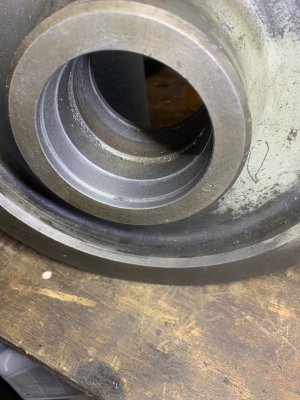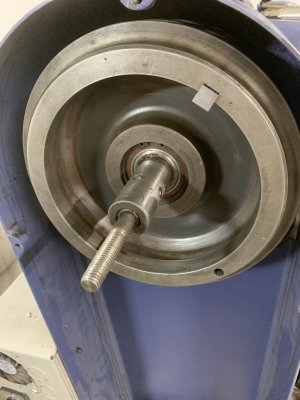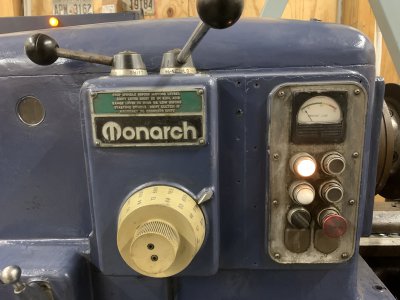- Joined
- Nov 24, 2014
- Messages
- 3,159
@rabler
Thanks for the explanation of design details.
I had not previously seen the retaining ring groove on the input shaft. I had wondered about the chamfer at the ID of the new special washer, but it all makes sense now. The circular cross section retaining rings (CCSRR) are news also. I had assumed the two retaining rings in the pully ID were conventional Waldes Truarc type snap rings. When I bump into interesting design details, like the CCSRRs, I wish I could have a conversation with the responsible designer to understand the rationale. I'm pretty sure that snap rings were available earlier than the '40s so there must be some reason the Monarch designers chose the CCSRRs. I wonder if the CCSRRs are intended to leave zero axial clearance. Maybe they were malleable enough to be upset, in place, to eliminate axial clearance. If I were boring out the pully ID, I'd cut grooves for modern snap rings rather than CCSRRs.
It took a fair amount of re-reading and viewing your pictures, but I think I understand the clutch system pretty well now. The pulley drives the friction disks through the two lugs so the pulley doesn't see any axial force from the pressure plate. Like you've said, there is no significant axial load on the pulley.
Thanks for the explanation of design details.
I had not previously seen the retaining ring groove on the input shaft. I had wondered about the chamfer at the ID of the new special washer, but it all makes sense now. The circular cross section retaining rings (CCSRR) are news also. I had assumed the two retaining rings in the pully ID were conventional Waldes Truarc type snap rings. When I bump into interesting design details, like the CCSRRs, I wish I could have a conversation with the responsible designer to understand the rationale. I'm pretty sure that snap rings were available earlier than the '40s so there must be some reason the Monarch designers chose the CCSRRs. I wonder if the CCSRRs are intended to leave zero axial clearance. Maybe they were malleable enough to be upset, in place, to eliminate axial clearance. If I were boring out the pully ID, I'd cut grooves for modern snap rings rather than CCSRRs.
It took a fair amount of re-reading and viewing your pictures, but I think I understand the clutch system pretty well now. The pulley drives the friction disks through the two lugs so the pulley doesn't see any axial force from the pressure plate. Like you've said, there is no significant axial load on the pulley.





